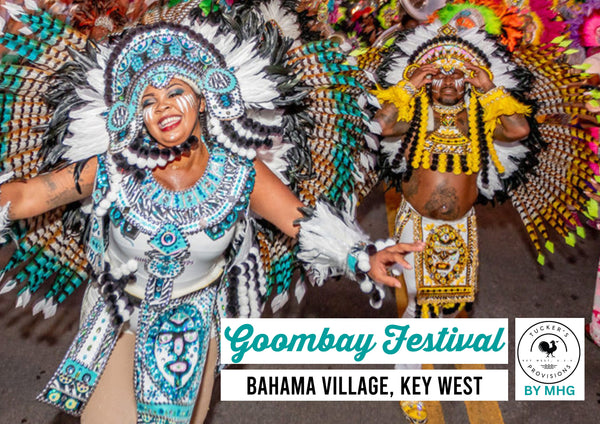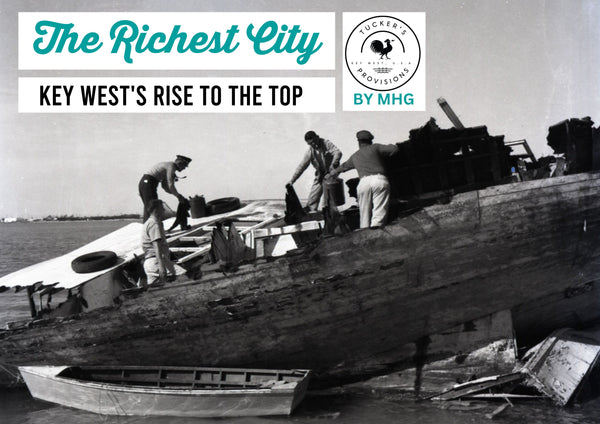BEYOND THE SHELL - What is a Key West Conch?

By - MHG
If you have visited Key West in the last century or so, you may have noticed the abundance of conch shell representation seen throughout our tiny island. Everything from general décor to the name of bars and restaurants , the Conchs are everywhere.
A conch is a marine snail, gastropod mollusk to be scientifically specific. This well-shelled creature is an herbivore, carrying its house on its back and living its best life throughout the Caribbean. Historically plentiful in the Florida Keys, Bahamas, Gulf of Mexico, and Bermuda, the conch is now listed as an endangered species and protected in some of its native territories due to over-harvesting for its highly sought-after meat and lovely shell. Today, the conch on menus in the Keys is from the Bahamas or other place.
There are many different species of conch, however the majority of our decorative depictions in Key West are of the mighty Queen Conch. This royal beauty is characterized by a large, heavy whorl-shaped shell fitted with many short horns atop its high spire. The somewhat drab buff-colored exterior of the shell is sharply contrasted by the vibrant pinky-peach interior lip that proudly extends out from its inner coil.
The animal itself, like most snails has the standard slimy alien look to it. Including eyeballs positioned at the end of long dangly stalks, somehow making it kind of cute. The rest of the conch consists of a thick and muscley blob of a body, dark with white spots – also strangely upping its cuteness factor.

The Queen conch – well, really its shell - is indeed a beauty, but it’s not its beauty that earned the snail such a prominent position in our island’s culture. The Queen conch has a long history in the islands, and with Keys folks. A history stemming back more than 200 years.
But before we tackle the conch’s crawl to the top of the Key West icons list, there’s one important detail to cover.

In the US, and most importantly in the Keys, conch is pronounced “konk” – like getting a konk on the head. That “ch” does not come to the party at all.
While it may seem trivial, saying it properly is perhaps more important than you think. This is for a few reasons. One being that long history that I mentioned, making the conch pretty special here in the Keys, and led to locals being called, “Key West Conchs”. So, if nothing else pronouncing “conch” correctly will get you off on the right foot with us locals. Also, nothing says “Hey! I’m a tourist!” like mispronouncing the name of our sea slug mascot. Suffice it to say, the conch is all tangled up in our feelings, pride and respect here in the Keys.
Now, for the making of the “Key West Conch”. This term refers to those born and raised in Key West – the first settlers and the long-time residents.
The connection between Key Westers and this particular sea snail is said to go back as far the American Revolution. Post revolution, Americans that had been loyal to the British crown were fairly unpopular. Many fled to the nearest British colony, the Bahamas. Before long, Britain laid a hefty tea-like tax on food resources in the colony. Similar to the reception this type of taxing received in Boston, the Bahamians and American transplants were none too happy. In protest, many vowed they would not pay the tax and would rather eat conch. And eat conch is what they did! And they did it quite well, coming up with dozens of amazing ways to tenderize and prepare the naturally tough meat.

Yum! Conch Fritters
Eventually the name Conch was used to refer to the locals in the Bahamas, those that regularly harvested and ate the animal. Eventually, many original Conchs migrated and settled in Key West, where they proudly adopted the nickname, Key West Conchs.
As time when on, the culture of Key West Conchs disseminated throughout the island. This also gave rise to a new set of traditions as well. For example, in Key West when a baby was born the family would place a conch shell in the front yard. Pointy end up indicated the baby was a boy, open end up meant the family had welcomed a baby girl!
No doubt in today’s Key West, the tradition of being a Key West Conch remains, and is as strong as ever. Consistently reinforced over the years by family ties, friendships, business dealings and partnerships Key West Conchs have stood the test of time.
Even our high school sports teams are named in honor as the, “Fighting Conchs”. Our large Queen Conch mascot still standing tall and proud out front of the school parking lot.

Fighting Conch Mascot at Key West High School
Now you may be thinking, and understandably so, that a “thundering herd of sea snails” may not strike fear in the hearts’ of our opponents like some other, perhaps more fierce mascot options might. And you would be right in that thinking – it is a bit of an odd mascot for our sports teams. But the thing is, if you’ve ever tried to extract a conch from its shell, you would know that they are indeed a force to be reckoned with in their own right. Stubborn and steadfast in their ability to hold strong, and with well intact survival instincts.
Layer upon layer of time forged island culture has formed around being a local here in the Keys.
To this day, if you are born in Key West you are a Conch. And it’s not a completely exclusive status, if you were born elsewhere but are a long-time resident of more than seven years, you are deemed a freshwater conch. There is also the concept of honorary Conchs, which is a little more loose, but can be awarded to those that the locals embrace as one of their own.
While there is no written rule on this, local status and being a Key West Conch is without a doubt a complex cultural construct for us, steeped in nostalgia and complete with traditions, stories and strong sense of community. A community that’s earned its patina over the years, understands the way of the sea, and comes together in the face of disaster or tragedy like no other I’ve ever seen.

Queen Conch on the Ocean Floor
1 Response
Leave a comment
Comments will be approved before showing up.
Also in Blog

Our Connection to Hemingway

GOOMBAY FESTIVAL - Bahama Village, Key West


Sharlene Marie ( carbonell) caldwell
March 20, 2023
I am a born and raised conch
when I was a little girl 70’s. my grandfather Dr. f. S. carbonell had a family home in big pine he used to tie ropes on the back of the boat and us kids would hold on and when we saw a conch we would raise our hand and then dive down and get them swim back to the boat. So many great memories.